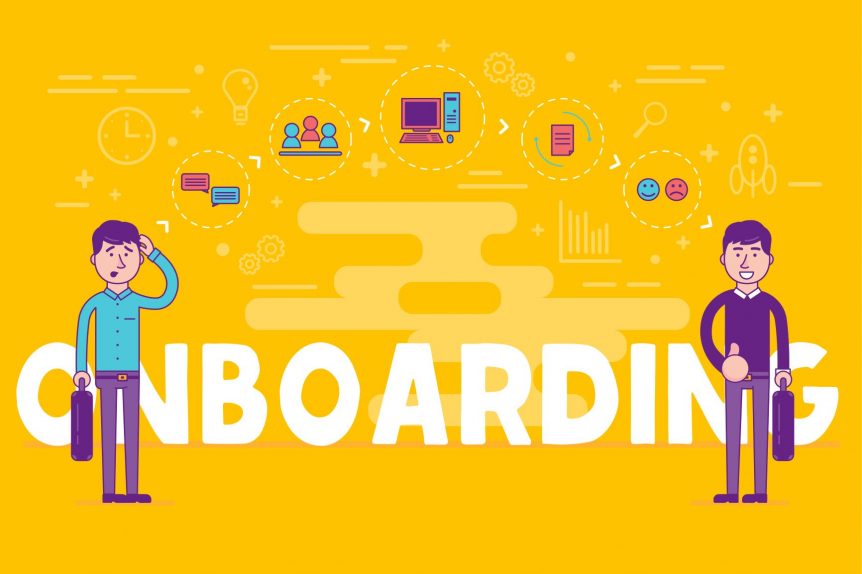8 Tips When Using E-Learning for Onboarding
Onboarding incorporates all the steps and actions your company takes to get a new hire up and running. In other words, it’s essential whatever your business and whatever type of job you recruited the new employee for.
All too often, however, onboarding processes don’t meet the same standards that companies set themselves in other areas.
On one level, this is understandable. After all, onboarding is not the core area of business for most companies.
It is a crucial process, however, and one that e-learning can make more effective. This is because e-learning can help with the two primary objectives of onboarding:
- To get the new hire up to speed as quickly as possible
- To give the new hire the support they need to ensure they don’t leave
Using e-learning in the onboarding process also brings other benefits, although we covered these benefits in a previous blog.
In this blog, we’re going to focus on eight crucial tips for using e-learning to improve the onboarding process in your organisation.
Tip 1 – Use a Blended Approach
Using a blended approach doesn’t mean you should abandon all face-to-face contact and group training sessions, replacing them with e-learning. Doing this will just make the onboarding process even more impersonal.
Adopting a blended approach is the best option you have. With a blended approach, the onboarding process will include:
- E-learning elements
- Face-to-face meetings, both informal and formal, with HR staff, managers, supervisors, and mentors
- Group training sessions which can be delivered in-person, via a webinar, or through synchronous e-learning
- Documentation such as employee handbooks
You probably already use 2-3 of the above. Adding e-learning to the mix will significantly improve the onboarding process, reduce the resources it requires, and save you money.
Tip 2 – Add Video
Video content is essential to almost all types of e-learning course. This is no different when it comes to e-learning courses for onboarding.
Video makes content more personal, plus people often prefer to watch a video than read text. Therefore, your onboarding e-learning courses should include video.
Tip 3 – Use Existing Staff in the Content
Using existing staff to deliver some of the onboarding content and explain what it’s like working in the company will make your e-learning courses less corporate and impersonal. This particularly applies if the new recruit can relate to the person, i.e. if they have a similar job.
A good way of doing this is by using existing staff in video content.
Tip 4 – Create the Content from the Perspective of the New Hire
One major problem with many onboarding processes is they approach the issue from the perspective of the company. In other words, there are a lot of rules, procedures, expectations, ways of doing things, etc that the company needs to get across, so that becomes the focus.
Creating e-learning onboarding courses lets you take a step back from this to look at the issue from the perspective of the new hire.
Doing this means you can then plan out a learning path that will give the new member of staff all the required information, but in a way that is easy to take in and learn.
Tip 5 – Express the Company Culture
Following on from the last point, it’s also important to remember the nervousness that most people feel when starting a new job. Expressing your company culture throughout all e-learning courses can help reduce that nervousness and make new employees feel more comfortable in their choice to come and work for you.
Tip 6 – Personalise the Content
This is another tip that can apply to e-learning courses on almost all topics, but it has particular importance for onboarding content.
At the very least, you should personalise e-learning onboarding courses by location. The more personalisation you can add, however, the better the courses will be. This can include, for example, personalising the content by job role or department.
Tip 7 – Add Active Learning Elements
Another common problem with onboarding and new recruit training in many organisations is the fact new employees are rarely actively involved. Instead, they listen to or read information. In some situations, they can ask questions, but most onboarding involves telling the new hire what the company wants them to know.
E-learning gives you the opportunity to improve this by adding active learning elements. This could be through gamification, scenarios, or quizzes, i.e. content that the new hire must participate in to complete.
Tip 8 – Get Feedback, Evaluate, and Improve
Finally, you should ask for feedback from employees who have recently gone through the onboarding process, particularly regarding the e-learning course elements. You should then act on this information to make improvements.
After all, most people involved in managing the creation of e-learning content for onboarding will be too close to the process to have a clear understanding of what it’s like for a new person first walking through the doors. Constantly working to improve what you do is the best way to optimise results.
Getting a Competitive Edge
With recruitment and staff retention becoming so critical in many organisations, industries, and sectors, improving your onboarding process can give your company a competitive edge. E-learning will help you achieve this.
